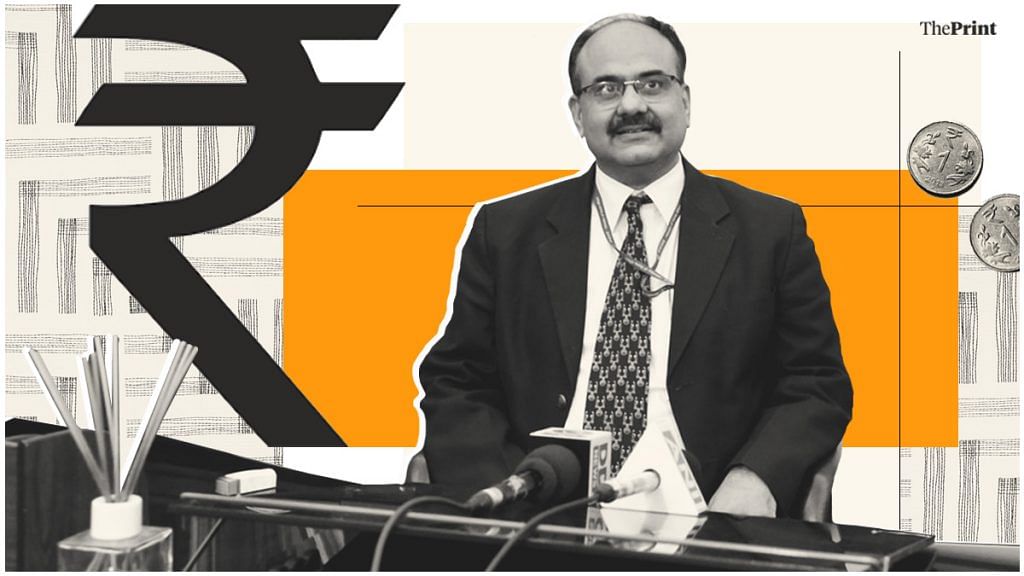New Delhi: Ajay Bhushan Pandey, a 1984-batch Indian Administrative Service (IAS) officer who has been elevated as the finance secretary, is known to be a multi-tasker and is seen as an efficient administrator by his colleagues.
These attributes will be more than put to test over the next year as India faces a sharp slowdown in GDP growth and tax collections, and now, even fears of disruption in economic activity due to the coronavirus outbreak.
Pandey will hold the post until he retires in February next year, according to a government order Tuesday.
The Appointments Committee of Cabinet typically designates the most senior secretary in the finance ministry, which Pandey was, as the finance secretary. It is considered to be one of the most senior positions for civil servants in the Union government after cabinet secretary.
For nearly a year between 2018 and 2019, Pandey, a Maharashtra cadre officer, handled three crucial positions together — as revenue secretary, chief executive of the Unique Identification Authority of India (UIDAI), and chairman of the Goods and Services Tax Network (GSTN).
While he no longer serves as the UIDAI chief, he continues in the other two roles. As revenue secretary, he also handles two tax boards — the Central Board of Direct Taxes (CBDT) and the Central Board of Indirect Taxes and Customs (CBIC) — and the Enforcement Directorate.
An electrical engineering graduate from IIT Kanpur, Pandey obtained his MS and PhD degrees in computer science from the University of Minnesota in the US.
Also read: RBI Governor Shaktikanta Das sees NBFC crisis abating as liquidity improves
Finance ministry challenges
Pandey’s tenure as the chief civil servant in the finance ministry will bring perhaps the biggest challenges he has faced in a while.
India’s economic growth has seen a sharp slowdown in growth, pushing tax collections to grow at a much slower pace than anticipated. This has forced the government to scale down revenue projections drastically for 2019-20 while keeping the projections for 2020-21 at realistic levels.
Pandey has been trying to push both CBDT and CBIC to increase tax collection without harassing the taxpayers. He is also pushing taxmen to proactively approach taxpayers to encourage them to opt for the dispute resolution scheme for direct taxes announced in the budget, said two officials in the finance ministry.
He has also been aggressively pushing for better techniques to detect tax evasion under the GST regime, added the officials.
With economic growth slowing down to 4.7 per cent in the quarter ended December and the impact of coronavirus expected to further disrupt economic activity, the finance secretary is likely to have its hands full in attempting to revive growth.
The Aadhaar tenure
Those who have worked with him say Pandey is no novice in dealing with challenges. Before joining the finance ministry as revenue secretary in November 2018, he was associated with the UIDAI for over nine years in various capacities in Mumbai and Delhi.
He served as UIDAI’s chief executive from May 2016 — two years after the Narendra Modi government came to power — for over two years.
Pandey assumed the charge of UIDAI, the nodal body for Aadhaar, at a testing time. He had to fill in the shoes of Aadhaar’s architect and former chairperson Nandan Nilekani, if not in terms of the exact designation, then in role and projection.
After being orphaned by the Congress, whose baby it was, Aadhaar received Prime Minister Narendra Modi’s complete backing soon after he assumed office. For the new UIDAI chief, it was an uphill task to deliver on the PM’s expectations.
Low-profile and soft-spoken, Pandey had to navigate Aadhaar through the initiative’s toughest phase — heavy public backlash by sceptics and critics, consistently emerging privacy concerns, unfavourable news reports of leaks and violations, and most importantly, a long-drawn legal battle.
Pandey led the UIDAI’s defence of Aadhaar in the Supreme Court, making a presentation over two days during hearings in 2018 about the benefits of Aadhaar and the technology used for the 12-digit unique ID.
Also read: Blame Modi govt’s political, social agenda for slowdown, says Raghuram Rajan
Work in ministry
With Aadhaar passing the top court’s test — at least to a significant degree — Pandey’s task was accomplished. He had PM Modi’s ear and trust, which showed in how he continued as UIDAI chief even after his entry into the high-profile finance ministry.
Last year, when he was handling both Aadhaar and the revenue department, he had enough on his plate, especially during the Budget season. During this period, Pandey worked out of the finance ministry in North Block, while files from UIDAI were sent to him everyday.
Pandey was relieved as UIDAI CEO only in October last year, with IAS officer Pankaj Kumar taking charge.
Just a month before that, Pandey managed to finalise the structure of the proposed corporate tax cut with his colleagues in less than a week ahead of the Prime Minister’s visit to the US, said the ministry officials.
He could manage this as his colleagues see him as a good manager who knows how to get work done efficiently. “The secretary encourages the officials to speak up and express their opinion in meetings,” said a tax department official who didn’t wish to be identified.
Also read: Coronavirus impact on India’s trade estimated to be $348 million: UN report
